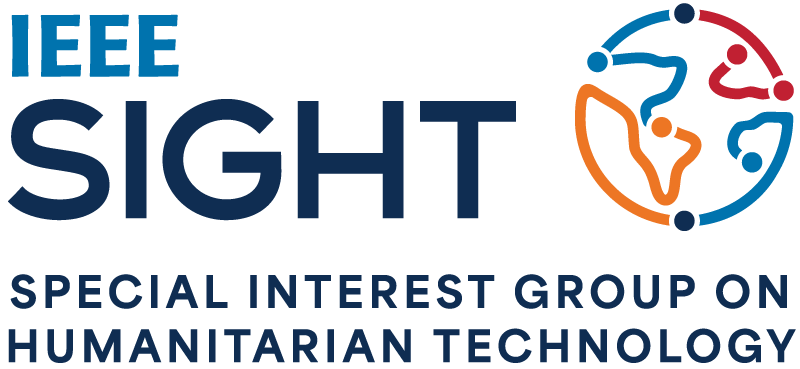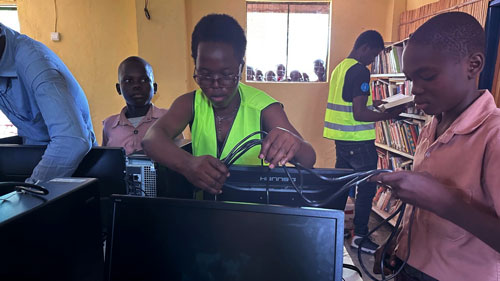Overview
Existing SIGHT Groups may reference the SIGHT Group Operations Handbook and the IEEE Humanitarian Technologies visual identity guidelines to support their activities.
Additionally, SIGHT members should be familiar with:
SIGHT Group Operations Handbook
A SIGHT Group’s main purpose is to partner with underserved communities and local organizations to leverage technology for sustainable development.
The Group Operations Handbook was developed to ensure consistency in the operational practices of SIGHT Groups across the world, provide guidelines to help Groups form and operate, and strengthen the resources and support system for members of existing SIGHT Groups.
Groups can reference the Handbook for information on how the formation of new Groups, Group management, officer roles and responsibilities, elections, and reporting requirements for maintaining a Group in good standing.
As a reminder, Groups should submit their activities and meetings through vTools event reporting and their officers through vTools officer reporting.
IEEE SIGHT Visual Identity Guidelines
IEEE Humanitarian Technologies (IEEE HT) is a consortium of programs – supported by a global network of volunteers and technical professionals – working together to apply technology to solve the world’s most pressing problems. For more information, please visit: ieeeht.org.
The consortium of IEEE HT programs leverages the strength and reach of the IEEE network to make a difference in local communities around the globe.
IEEE SIGHT is an IEEE HT program, and as such the sub-brand identity guidelines should be upheld. The IEEE SIGHT brand mark should be included with other sponsor wordmarks when IEEE SIGHT programs or activities have provided funding or other formal support.
SIGHT Groups should ONLY use the approved identifier treatments available to make their own customized logo.
Humanitarian Technology Modules
An educational curriculum on Humanitarian Technology and Sustainable Development at IEEE is available on the IEEE Learning Network.
This curriculum equips participants with a basic understanding of humanitarian technology and sustainable development, and how these concepts are different from aid, charity, and disaster relief. It outlines the need for holistic analysis of existing systems, instructs on the principles of community engagement, and covers the role of appropriate technology in sustainable development.
This curriculum includes the following courses:
- Introduction to Sustainable Development
- Multidisciplinary Perspectives in Humanitarian and Sustainable Development Activities
- Community Engagement in Sustainable Development Projects
- Humanitarian Technology for Sustainable Development
- Sustainable Project Design
Best Practices Repository
The HT Best Practices Repository is a comprehensive resource hub that brings together valuable guidelines and frameworks at the intersection of humanitarian technology and social impact. It features the latest educational content curated from IEEE, IEEE HTB, academia, targeted working groups, and external thought leaders.
Sustainable Development Goals of the United Nations
The 2030 Agenda for Sustainable Development, adopted by all United Nations Member States in 2015, provides a shared blueprint for peace and prosperity for people and the planet, now and into the future. At its heart are the 17 Sustainable Development Goals (SDGs), which are an urgent call for action by all countries – developed and developing – in a global partnership. They recognize that ending poverty and other deprivations must go hand-in-hand with strategies that improve health and education, reduce inequality, and spur economic growth – all while tackling climate change and working to preserve our oceans and forests.
Design Justice Network Principles
The HT Best Practices Repository is a comprehensive resource hub that brings together valuable guidelines and frameworks at the intersection of humanitarian technology and social impact. It features the latest educational content curated from IEEE, IEEE HTB, academia, targeted working groups, and external thought leaders.
The Field Guide to Human-Centered Design
A step-by-step guide that will get you solving problems like a designer by IDEO.org. At IDEO.org, part of our mission is to spread human-centered design to social sector practitioners around the world. The Field Guide to Human-Centered Design reveals our process with the key mindsets that underpin how and why we think about design for the social sector, 57 clear-to-use design methods for new and experienced practitioners, and from-the-field case studies of human-centered design in action. The Field Guide has everything you need to understand the people you’re designing for, to have more effective brainstorms, to prototype your ideas, and to ultimately arrive at more creative solutions.











